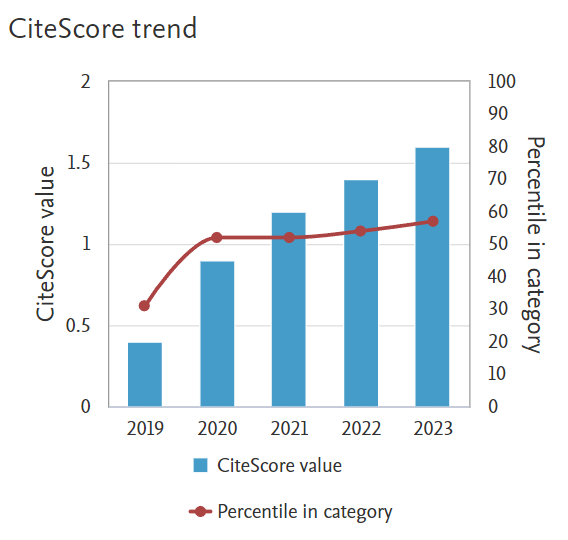Children in front of the television: the adultisation and digitisation of audiovisual content
Palabras clave:
Children, advertising, television, gender, age, Internet, mobile marketing, social marketingResumen
In order to be efficient, advertising needs to show familiarity with the communication habits of its target audience. As an audience group, children pose huge challenges, particularly since they constitute a target whose gender is not taken into consideration and which has an excessively broad age range, thereby masking a highly varied spectrum of behaviour. To identify the main differences in television viewing by Spanish children depending on age and gender, a study was prepared using three sources as its basis: Kantar Media, the EGM and a specific survey on 23 children. The results show a gradual adultisation of television viewing in favour of channels not intended solely for children. Audiovisual content is not viewed merely on a television set. Digital media have taken pole position as an entertainment choice, particularly among children over the age of 11.
El público infantil frente a la televisión: La “adultización” y digitalización de los contenidos audiovisuales
Resumen
La publicidad necesita conocer en detalle los hábitos comunicativos de sus públicos para ser eficiente. Uno de los targets que mayores desafíos plantea es el infantil, definido habitualmente sin atender a diferencias de género y con una horquilla de edad demasiado amplia, lo que enmascara comportamientos muy diversos. Para identificar las principales diferencias en el consumo televisivo por parte de los más pequeños según las variables edad y género, se realizó un estudio basado en tres fuentes: Kantar Media, EGM y una encuesta específica a 23 niños y niñas. Los resultados muestran una progresiva “adultización” del consumo televisivo hacia canales no exclusivamente infantiles. Un consumo de contenidos audiovisuales que ya no es exclusivo de la televisión y pasan a ser las disciplinas digitales la primera opción de entretenimiento, especialmente en los mayores de 11 años.
Descargas
Citas
Bermejo, J. (2011). Viejos esquemas, nuevas oportunidades. Consumo de los contenidos para la infancia en el nuevo escenario de la TDT. Telos, 87, 131-142.
Cardoso, G. (2011). Más allá de internet y de los medios de comunicación de masas. Telos, 86, 1-10.
Fernández, E. (2013). El primer año de la corporación RTVE: cambios en la programación de La 2. Historia y Comunicación Social, 18, 723-736. http://dx.doi.org/10.5209/rev_HICS.2013.v18.44003
Fernández, E. & Díaz-Campo, J. (2014). Los canales temáticos infantiles y juveniles en Facebook: análisis de los perfiles de Disney Channel, Boing y Neox. Comunicación y Hombre, 10, 179-194.
Fontana, A. & Frey, J. (2005). The Interview: from neutral stance to political involvement. In Denzin, N. & Lincoln, Y. (Eds.), The Sage Handbook of Qualitative Research. Thousand Oaks, California: Sage Publications, 695-727.
Freeman, D. & Shapiro, S. (2014). Tweens’ knowledge of marketing tactics. Skeptical beyond their years. Journal of Advertising Research, 1, 44-55.
García, N., Plana, G. & Ferrer, I. (2014). Géneros y formas de inserción publicitaria en la televisión española: regulación vs. práctica. Cuadernos.info, 34, 61-80. doi: 10.7764/cdi.34.579
Gillham, B. (2005). Research Interviewing. The range of techniques. Berkshire: Open University Press.
Kvale, S. (1996). Interviews. An introduction to qualitative research interviewing. London: Sage Publications.
Laczniak, R. N. & Carlson, L. (2012). A theory of advertising to children. In S. Rodgers & E. Thorson (Eds.), Advertising theory (pp. 135-148). New York: Routledge.
Lichtman, M. (2006). Qualitative research in education. A user's guide. Thousand Oaks, California: Sage Publications.
Martín-Guart, R. & Fernández-Cavia, J. (2014). Advertising and media agencies in the face of the change in the media ecosystem. Cuadernos.info, 34, 13-25. doi:10.7764/cdi.34.572
Mason, J. (2002). Qualitative Researching. London: Sage Publications.
Meho, L. (2006). E-mail interviewing in qualitative research: a methodological discussion. Journal of the American Society for Information Science & Technology. 57(10), 1284-1295. doi: 10.1002/asi.20416.
Merton, R. & Kendall, P. (1946). The focused interview. American Journal of Sociology, 51, 541-547.
Moreno, M. (2014). La Televisión Digital al servicio de un espectador activo, crítico y selectivo. Por un uso educativo de la TDT. Zer, 19 (37), 29-44.
Oltmann, S. (2011). Telephone & email interviews: using the respondents' context to determine the best interview mode. Proceedings of the 2011 iConference. New York: ACM, 734-735. doi: 10.1145/1940761.1940889.
Rubin, H. & Rubin, I. (1995). Qualitative interviewing. The art of hearing data. London: Sage Publications.
Stoltman, J. J. (1999). The context of advertising and children. In M. C. Macklin & L. Carlson (Eds.), Advertising to children. Concepts and controversies (pp. 291-298). Thousand Oaks, California: Sage Publications.
Wengraf, T. (2001). Qualitative research interviewing. Biographic, narrative and semistructured methods. London: Sage Publications.
Descargas
Publicado
Cómo citar
Número
Sección
Licencia
Los derechos de edición pertenecen a la Fundación iS+D para la Investigación Social Avanzada, entidad que edita la Revista Prisma Social, y es necesario su permiso para cualquier reproducción. En todo caso, será necesario citar la procedencia de cualquier reproducción total o parcial.
La publicación de artículos o reseñas en la Revista Prisma Social no da derecho a remuneración alguna.
Política de acceso abierto
La publicación de la Revista Prisma Social y su difusión se realiza de forma abierta a través de Internet.
La Revista Prisma Social ofrece acceso libre y abierto inmediato a su contenido de forma totalmente gratuita con el fin de hacer llegar la investigación científica a toda la sociedad y con el objetivo de crear una cultura reflexiva encaminada a la comprensión de los comportamientos sociales desde una perspectiva global.
Todos los contenidos digitales de la Revista Prisma Social son de acceso libre y gratuito y se publican bajo una licencia de Creative Commons:

está bajo una licencia de Creative Commons Reconocimiento-NoComercial-SinObraDerivada 3.0 España License.
Creado a partir de la obra en www.isdfundacion.org
Bajo esta licencia, está permitida la reproducción y difusión de los contenidos de la revista con fines educativos o de investigación, sin ánimo de lucro, siempre y cuando estos no se modifiquen, se cite la procedencia (Prisma Social, Revista de ciencias sociales), y la autoría.
Esta licencia a la que se acoge la Revista Prisma Social permite copiar, distribuir, exhibir los textos e imágenes de la revista, siempre que se cumplan las siguientes condiciones:
- Reconocimiento: Debe reconocerse y respetarse la autoría de la obra de la manera especificada por el autor y la entidad editora (Revista Prisma Social – Fundación iS+D).
- No comercial: No se puede utilizar esta obra para fines comerciales.
- No derivados: No se puede alterar, transformar o generar una obra derivada a partir de esta obra.
Se deberán establecer claramente los términos de esta licencia para cualquier uso o distribución de los documentos. Se podrá prescindir de cualquiera de estas condiciones si se obtiene el permiso expreso del autor/a.
Desde la Revista de Prisma Social se permite y se invita a los/as autores/as a ampliar la visibilidad, alcance e impacto de sus artículos publicados en la revista mediante la redifusión (auto-archivo) de los mismos en:
1. Sus espacios web personales (web, blog, redes sociales, foros científicos, etc.).
2. Archivos abiertos institucionales (archivos universitarios, Hispana, Europeana, etc.).
3. Redes sociales de naturaleza académica y científica (ResearchGate, Academia.edu, Getcited.org).
Se requiere que en dichas publicaciones se detallen todos los datos bibliográficos de la publicación.
Para más información, puede descargar y consultar las Condiciones de Publicación:

















